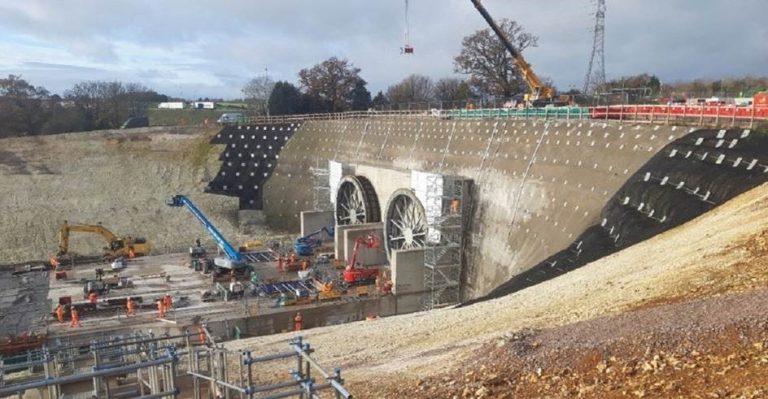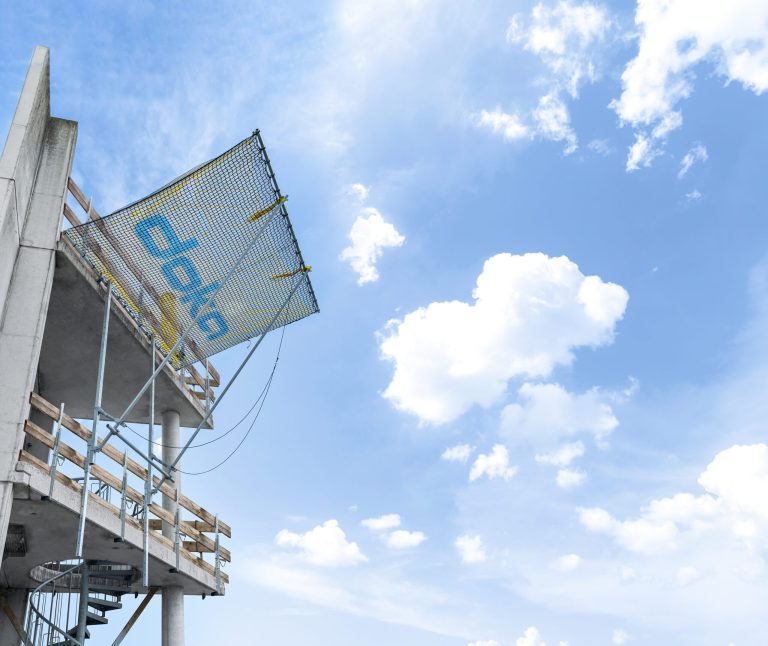SOCOTEC is one of the UK’s leading providers of testing, inspection and certification services, provides comprehensive solutions in the Infrastructure, Environment & Safety, Environmental Science and Building & Real Estate sectors. Founded in 1953, the company offers a wide range of services to assist and advise clients through every step of a project’s life cycle, from acquisition and planning all the way through to completion and analysis. ITM Monitoring was acquired by SOCOTEC in 2018, and has subsequently rebranded to become SOCOTEC Monitoring UK. With over 30 years’ civil engineering experience, SOCOTEC Monitoring UK is the trusted contractor in construction, rail, highways, utilities, mines and ports across the UK, specialising in the design, installation and data provision for geotechnical and structural monitoring systems. High Speed 2 (HS2) is a high-speed railway line currently under construction in the United Kingdom. As the country’s second purpose-built high-speed line (the first being HS1), HS2 Phase One will connect London and Birmingham with a dedicated high-speed track, increasing capacity on the network. There was a risk that the construction of HS2 could have had an impact to the M25 motorway, when the tunnelling machines passed underneath in summer 2021. National Highways (formerly Highways England), the government-owned company charged with operating, maintaining and improving motorways and major A roads in England, wanted to ensure that the structural integrity of the motorway was not compromised during the tunnelling construction phase of HS2. About the project The M25 is one of the busiest roads in Europe, carrying over 250,000 vehicles per day. In 2019, Align JV awarded a contract to SOCOTEC to conduct monitoring of the M25 motorway and surrounding assets during construction. A main part of HS2, the Central 1 (C1) Section that Align JV is delivering, includes the boring of two separate tunnels underneath the motorway itself. A vital stage of the construction process was the monitoring of the motorway and surrounding assets to track any shifts in the settlement of both clockwise and anti-clockwise carriageways, sheet pile walls, bridges and abutments, the central reservation and two gantries. SOCOTEC conducted a 12-month baseline monitoring programme before the TBM’s started the crossing on the M25. The monitoring started hourly, with MS60 MultiStations measuring prisms, patch scanning and industry-leading reflectorless measurements due to the wave form digitiser technology. The MS60 successfully managed to conduct patch scanning and reflectorless measurements through the traffic at peak hours on the M25. The results provided by SOCOTEC while using the MS60 instilled confidence in the project that the potential settlement caused by the tunnelling was within the set parameters of the predicted movement set out by the clients’ designers. Challenges As one of the busiest roads in Europe, access to the motorway was often restricted, with monitoring teams unable to access the road unless it was closed, along with bridges and other monitoring points being obstructed by heavy traffic. Automated patch scanning was therefore suggested to reduce the amount of time required for teams to spend on site, increasing efficiency and improving safety. Due to restricted access on the motorway, the ability to install physical monitoring points also proved to be an obstacle to SOCOTEC. Communication between the different monitoring points was initially difficult due to the inability to run network cables to certain areas. Implementation of SCCS solutions To accomplish these tasks, a geodetic monitoring solution was required, with the ability to conduct monitoring without requiring prisms in all locations. These solutions needed to be installed in such a way so as to not obstruct traffic. With this in mind, SOCOTEC reached out to SCCS Survey. Leica GeoMoS Monitors were suggested, which enabled SOCOTEC to automate the monitoring project and use the power of imagery to minimise visits to site. Leica Nova MS60 MultiStations, GeoMoS, allowed the automatic triggering of alerts if the predefined movement levels were reached. The solution also included AD12 – Self Levelling Tribrach, which could be programmed by GeoMoS Monitor to auto-level the instrument prior to any measurement cycle. This was especially useful, as the instruments were at elevated positions to provide optimal angles of instance to the monitoring locations. SCCS provided three MS60s fitted with LOC8 and a singular Leica Nova TM50 in total. The four total stations were communicated through an SCCS Comms Box using Leica Comgate 20’s. To complete the physical set-up, security cages were designed specifically in-house by SOCOTEC for all four total stations. The MS60s and TM50 were mounted in secure cages on top of plinths (high enough so as to not obstruct motorway traffic), along with the automatic tribrach AD-12 for automatic levelling of the instruments. Voltmeters were installed at each instrument to ensure that power was being provided to each unit for charging. The monitoring project required not just sensors, software and power components, but also communication devices in the field. With all of these different components, installation would prove complex and challenging when trying to figure out how to set everything up and automate it to make it run 24/7. To overcome this challenge, SOCOTEC installed four SCCS Comms Boxes with Leica ComGate20s in the field and connected the four instruments to them. The configuration of all the devices was then performed remotely in one centralised view within the Leica GeoMoS monitoring project. This significantly sped up the configuration process and gave SOCOTEC an overview of all of their measurement cycles. An array of prisms was set up on top of the embankments, some of which served as control prisms outside the zone of interest (ZOI). Test patches were set up to scan over 20 metres, 40 metres and 60 metres, each with different obtuse angles of instance. Hourly scans were implemented from the start of the project, and once the TBM’s had passed, these were switched to three-hourly intervals to adhere to the post-construction monitoring phase. Each monitoring project has specific measurement and accuracy requirements. For this particular project, SOCOTEC used the powerful Leica GeoMoS software solution, which provided a highly flexible automated deformation monitoring system











